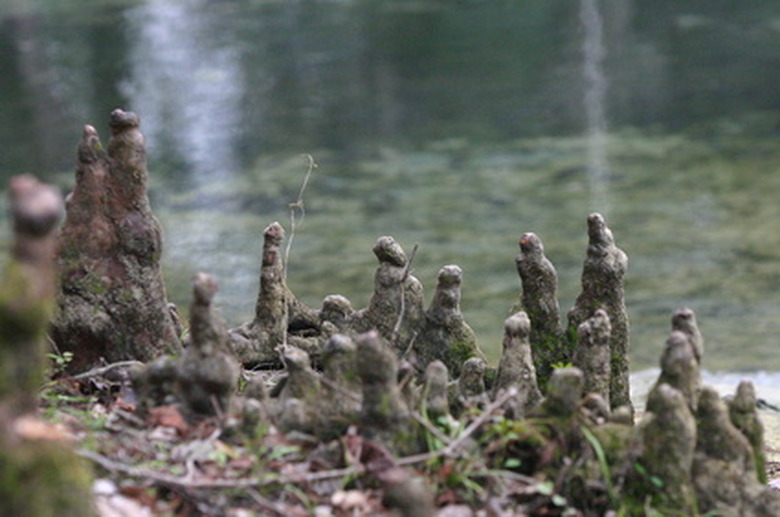Fungus In Bald Cypress Trees
The bald cypress is a vigorously growing, deciduous conifer. This North American native can reach mature heights up to 150 feet and can flourish for more than 600 years. The bald cypress easily adapts to drought conditions and thrives in wet, swampy environments. Though adaptable, this conifer grows most vigorously in acidic, loamy soils.
Diseases
The bald cypress is a mostly disease-resistant conifer. However, it is susceptible to brown pocket rot. Brown pocket rot is a fungal disease that infects the bald cypress through its crown. As this fungal disease penetrates the foliage, it enters the trunk and infects the heartwood. The heartwood becomes hollowed with spotted decay and the tree eventually dies. The bald cypress is also susceptible to twig blight.
- The bald cypress is a vigorously growing, deciduous conifer.
Causes
Brown pocket rot and twig blight are both spore-borne fungal diseases that are especially rampant during the wet, cool seasons. These fungal spores are sheltered by decomposing debris that lies dormant around the tree, as well as on crevices of infected trees nearby. Dormant during the winter months, these fungal spores emerge in the spring. They are transported by wind and rain onto the bald cypress and infect the bald cypress.
Effects
The super disease resistance and rapid growth rate of the bald cypress can delay symptoms of infection. Bald cypress trees infected with twig blight will show symptoms gradually throughout the growing season. However, severe infections will cause extensive symptoms throughout the tree. These symptoms include spotting and blighted symptoms on the tree's foliage, fruit and bark. Unlike twig blight, brown pocket rot symptoms are initially internal. As the decay of the heartwood increases, the bald cypress begins to show signs of stunting and dieback. These symptoms continue until the tree is destroyed.
- Brown pocket rot and twig blight are both spore-borne fungal diseases that are especially rampant during the wet, cool seasons.
- Bald cypress trees infected with twig blight will show symptoms gradually throughout the growing season.
Maintenance
Controlling bald cypress fungal diseases involves protecting the tree with maintenance. You should keep your bald cypress' planting area free of decomposing debris to reduce the potential of spore germination near your tree. Pruning and thinning of the smaller bald cypress will help to increase the light penetration and air circulation throughout the tree. This increase also reduces the potential of fungal infections. Additionally, regular fertilization throughout the growing season will help the bald cypress to defend itself from potential ailments.
Chemical Control
Chemical fungicidal applications are available to protect the bald cypress from infections. These fungicidal treatments can be effective in prevention and control when applied in a timely and accurate fashion. Trees completely ravished by a fungal disease will find little assistance with fungicidal treatments.
- Controlling bald cypress fungal diseases involves protecting the tree with maintenance.
- Pruning and thinning of the smaller bald cypress will help to increase the light penetration and air circulation throughout the tree.
